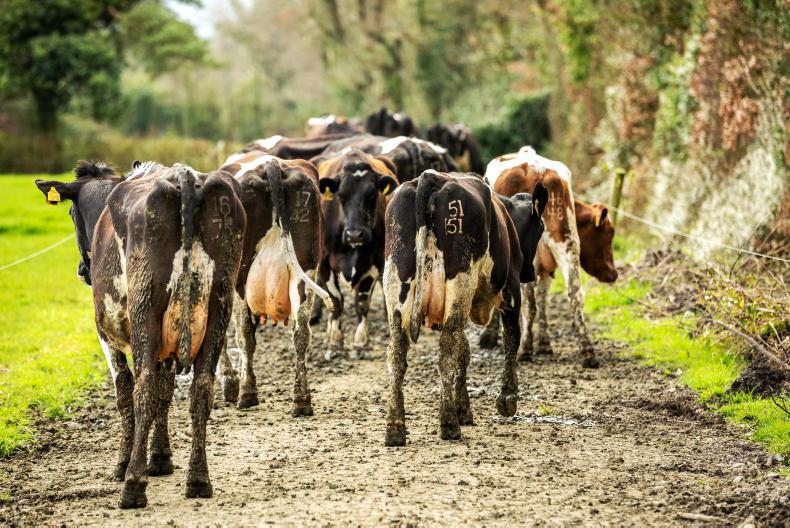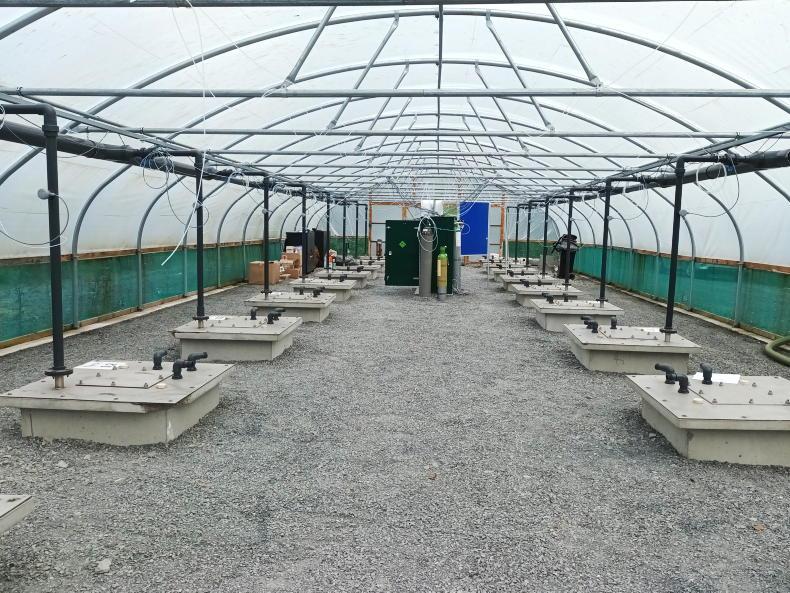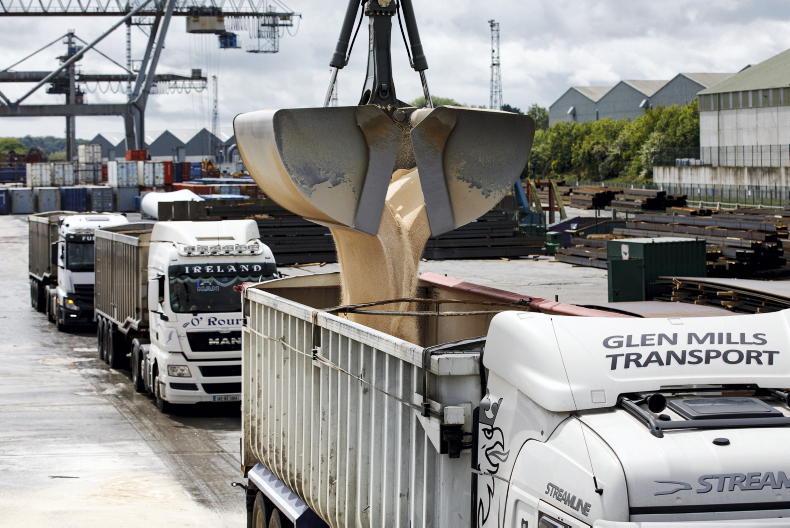Irish ammonia emissions rose by 1% in 2021 compared with 2020 levels, the smallest increase seen out of four key air pollutants analysed by the Environmental Protection Agency (EPA).
Approximately 99% of such ammonia emissions are caused by agricultural activity, with the EPA warning that a 3% increase in dairy cow numbers in the year and slow uptake of protected urea contributed to the rise.
There were also emissions increases of nitrogen oxides (3%), sulphur dioxide (10%) and non-methane volatile organic compounds (2%) in 2021.
Power generation plants and motor vehicles were the “principal sources” of nitrogen oxide emissions increases, according to the EPA.
As part of this, the agency reported a 200% increase in the use of coal and fuel oil at power plants across Ireland in 2021.
The EPA highlighted Moneypoint power station, Co Kerry, as the only power station still using coal and said it uses fuel oil to “ignite coal and as a standalone fuel”.
Ammonia
While increasing just 1% in 2021, the EPA highlighted that ammonia emissions are the only pollutant for which Ireland is in non-compliance with the national emissions reduction commitments directive.
The directive is based off 2005 air pollutant levels, with Ireland assigned a target of having 1% ammonia emissions reduction for any year from 2020 to 2029. Ireland’s ammonia emissions unfortunately increased 3.8% from 2005 to 2021.

A 3% increase in the dairy herd in 2021 contributed to ammonia emission increases of 1%, said the EPA. \ Philip Doyle
On why Ireland’s ammonia’s emissions increased in 2021, the EPA said the “increased use of low emission slurry spreading to 48% was not sufficient to counteract the impact of the overall growth in livestock numbers”.
“Compliance with the 2030 [ammonia] reduction commitment is only possible with full implementation of all identified measures, such as low emissions slurry spreading and widespread use of inhibited urea fertiliser products,” a spokesperson added.
Progress
However, on ammonia emissions, it should be noted that in the six months from October 2022 to March 2023, nitrogen use was down 55% on farms due to costs and improved lime, clover and multi-species sward use with another, albeit lower, decrease seen last year as well.
The adoption of low emission slurry spreading (LESS) technologies also increased last year.
That said, the positive impact of this is not yet known, as air pollutant emissions data for 2022 is not yet available, said the EPA.
Other pollutants
Despite the 3% increase in nitrogen oxide emissions in 2021, they are down almost 54% on 2005. The target had been a reduction of 49%, so it remains compliant with the emissions directive.
The EPA found that the emissions of non-methane volatile organic compounds (NMVOCs) increased by 2% in 2021, driven largely by increased activity in spirit production for beverages. However, such emissions are down 25% on 2005 levels, again remaining compliant.

Power generation plants and motor vehicles were the “principal sources” of nitrogen oxide emissions increases, according to the EPA.
Abatement measures for this drinks industry source are needed if future emissions reduction targets are to be met, said the EPA.
The EPA found that sulphur dioxide emissions were up almost 10% in 2021, “mainly as a result of the tripling of both coal and fuel oil use in electricity generation”. However, these emissions are down 25% on 2005 levels.
Data
The data shows that while ammonia emissions may have increased the least in 2021 and there were higher increases in other pollutants, a lack of progress in previous years means ammonia emissions still fail to meet EU reduction requirements.
An EPA spokesperson could not say which of the air pollutant emissions increases, ammonia (1%), nitrogen oxide (3%), sulphur dioxide (10%) and non-methane volatile organic compounds (2%) had the greatest impact on the overall climate.
Nor could they say which had the greatest impact on Ireland’s overall emissions calculations.
Irish ammonia emissions rose by 1% in 2021 compared with 2020 levels, the smallest increase seen out of four key air pollutants analysed by the Environmental Protection Agency (EPA).
Approximately 99% of such ammonia emissions are caused by agricultural activity, with the EPA warning that a 3% increase in dairy cow numbers in the year and slow uptake of protected urea contributed to the rise.
There were also emissions increases of nitrogen oxides (3%), sulphur dioxide (10%) and non-methane volatile organic compounds (2%) in 2021.
Power generation plants and motor vehicles were the “principal sources” of nitrogen oxide emissions increases, according to the EPA.
As part of this, the agency reported a 200% increase in the use of coal and fuel oil at power plants across Ireland in 2021.
The EPA highlighted Moneypoint power station, Co Kerry, as the only power station still using coal and said it uses fuel oil to “ignite coal and as a standalone fuel”.
Ammonia
While increasing just 1% in 2021, the EPA highlighted that ammonia emissions are the only pollutant for which Ireland is in non-compliance with the national emissions reduction commitments directive.
The directive is based off 2005 air pollutant levels, with Ireland assigned a target of having 1% ammonia emissions reduction for any year from 2020 to 2029. Ireland’s ammonia emissions unfortunately increased 3.8% from 2005 to 2021.

A 3% increase in the dairy herd in 2021 contributed to ammonia emission increases of 1%, said the EPA. \ Philip Doyle
On why Ireland’s ammonia’s emissions increased in 2021, the EPA said the “increased use of low emission slurry spreading to 48% was not sufficient to counteract the impact of the overall growth in livestock numbers”.
“Compliance with the 2030 [ammonia] reduction commitment is only possible with full implementation of all identified measures, such as low emissions slurry spreading and widespread use of inhibited urea fertiliser products,” a spokesperson added.
Progress
However, on ammonia emissions, it should be noted that in the six months from October 2022 to March 2023, nitrogen use was down 55% on farms due to costs and improved lime, clover and multi-species sward use with another, albeit lower, decrease seen last year as well.
The adoption of low emission slurry spreading (LESS) technologies also increased last year.
That said, the positive impact of this is not yet known, as air pollutant emissions data for 2022 is not yet available, said the EPA.
Other pollutants
Despite the 3% increase in nitrogen oxide emissions in 2021, they are down almost 54% on 2005. The target had been a reduction of 49%, so it remains compliant with the emissions directive.
The EPA found that the emissions of non-methane volatile organic compounds (NMVOCs) increased by 2% in 2021, driven largely by increased activity in spirit production for beverages. However, such emissions are down 25% on 2005 levels, again remaining compliant.

Power generation plants and motor vehicles were the “principal sources” of nitrogen oxide emissions increases, according to the EPA.
Abatement measures for this drinks industry source are needed if future emissions reduction targets are to be met, said the EPA.
The EPA found that sulphur dioxide emissions were up almost 10% in 2021, “mainly as a result of the tripling of both coal and fuel oil use in electricity generation”. However, these emissions are down 25% on 2005 levels.
Data
The data shows that while ammonia emissions may have increased the least in 2021 and there were higher increases in other pollutants, a lack of progress in previous years means ammonia emissions still fail to meet EU reduction requirements.
An EPA spokesperson could not say which of the air pollutant emissions increases, ammonia (1%), nitrogen oxide (3%), sulphur dioxide (10%) and non-methane volatile organic compounds (2%) had the greatest impact on the overall climate.
Nor could they say which had the greatest impact on Ireland’s overall emissions calculations.











SHARING OPTIONS